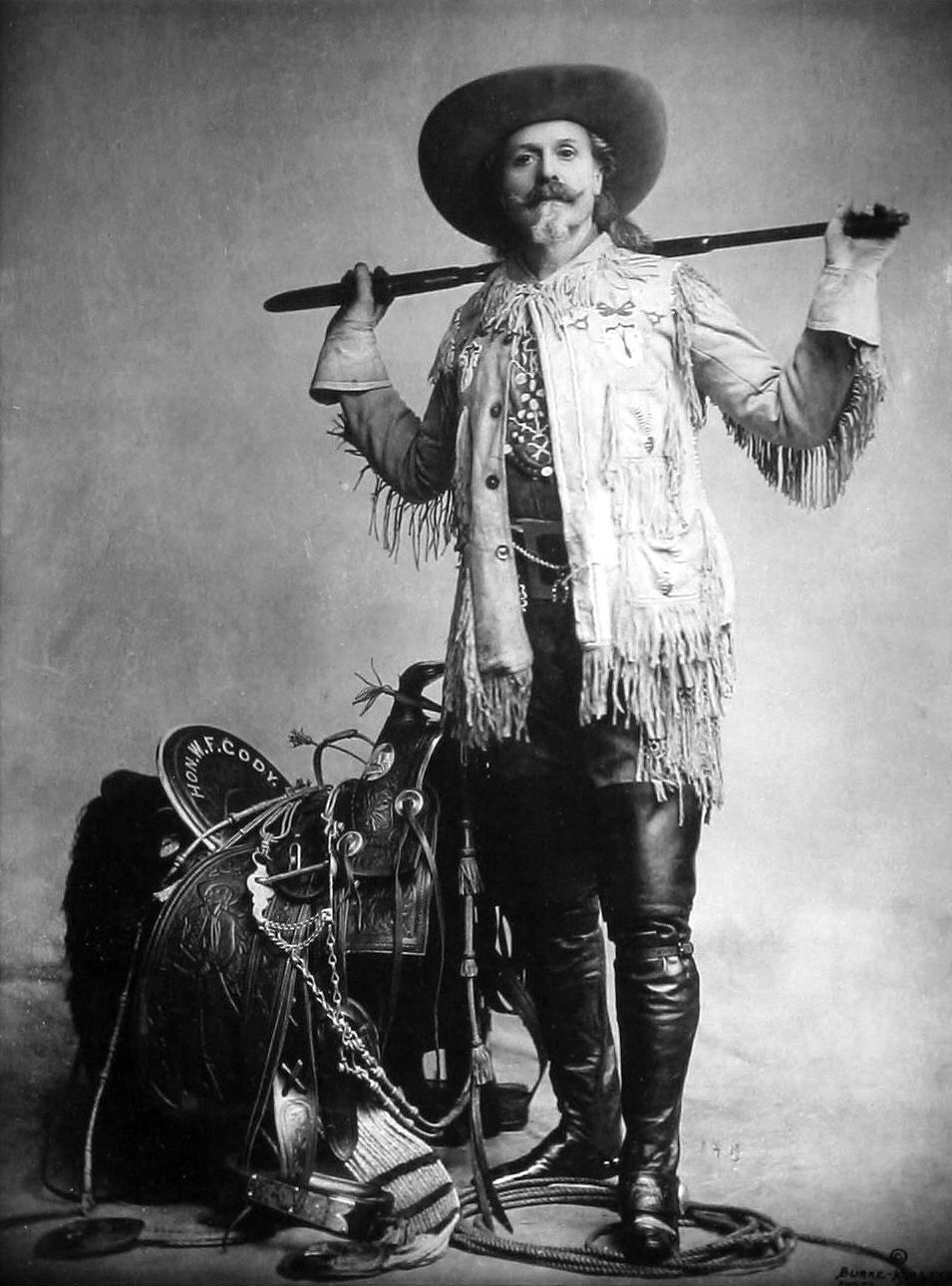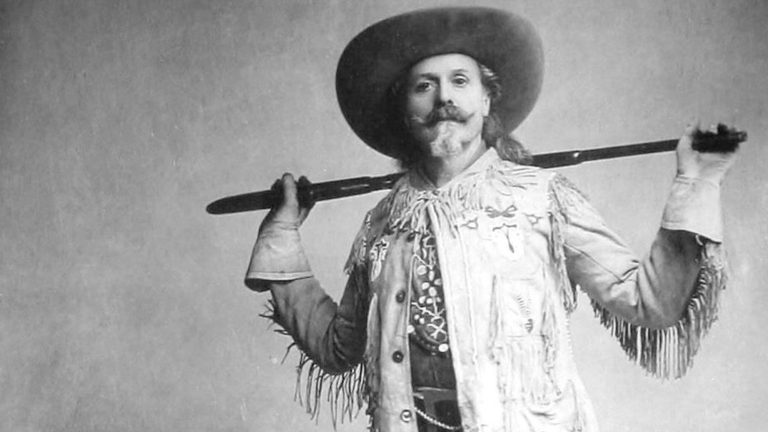He married Louisa Frederici in St. Louis on March 6, 1865, and afterwards ran a hotel for a few months, but he soon took up the trade that gave him his nickname, hunting buffalo to feed the construction crews of the Kansas Pacific Railroad in 1867. By his own count, he killed 4,280 head of buffalo in seventeen months—thus winning his sobriquet, “Buffalo Bill,” from the railroad hands. Again desiring the life of the West, he resumed work in 1868 as an Army scout and dispatch carrier for the 5th Cavalry in Kansas, Nebraska, and Colorado. In 1872, he led the famed buffalo hunting party of the Grand Duke Alexis of Russia.
Cody decided to take time off from scouting in 1872 to visit the East and check out the possibilities of performing in a “wild west” show as proposed by showman Colonel E. B. C. Judson, otherwise known as Ned Buntline, a famed fiction novelist of the day.
Buntline used Cody as the principal character in a number of sensational novels— the first in 1869 (Buffalo Bill, the King of the Border Men, first of more than 550 different dime novels about Buffalo Bill).
Cody decided to return to the cavalry. During that summer and fall, Ned Buntline continued urging Bill to “come East and go upon the stage to represent his own character. There’s money in it,” Buntline wrote, ” and you will prove a big card, as your character is a novelty on the stage.”
Bill remained undecided as to what to do. The officers at the fort, as well as family and friends laughed at the idea of Cody becoming an actor. In the autumn of 1872, he was elected to the Nebraska Legislature from the 26th District, but he resigned after three weeks, saying, “it was only fooling away time to make laws that nobody obeyed.”

Sensing a time to make a change for himself and his family, he agreed to join Buntline in a theatrical venture. Picking up Texas Jack Omohundro, he went to Chicago where they met Buntline in early December. “The Scouts of the Prairie” was a hit. The play traveled to St. Louis the following week, and afterwards to Cincinnati, New York, and Philadelphia, playing to crowded houses everywhere.
After the close of the season, Cody and Texas Jack were not satisfied with the settlement of the financial affairs of the first season, and they parted ways with Buntline. In 1873, they reorganized a new theatrical company with Wild Bill Hickok as an additional attraction. Bill remained the greater part of the season, but when Wild Bill amused himself by shooting blanks at the supers’ feet, Cody protested and Hickok quit. The next season, Texas Jack was absent from the company, but in 1875-76, he and Cody were again together on stage.
In the summer of 1876, after the close of the season, Cody joined his old regiment, the Fifth Cavalry, as guide and chief of scouts, during the Sioux War in the Powder River and Black Hills country.
That fall Cody was back on stage with a new play, “Life on the Border,” and brought Captain Jack Crawford aboard as one of the attractions. Cody also asked a number of Sioux Indians to accompany him on his theatrical tour in 1877-78, which opened at the Bowery Theatre in New York.
After the close of the 1882 season Cody organized his famous “Wild West, Rocky Mountain, and Prairie Exhibition” show, similar to the one attempted by Bill Hickok in 1870. The new extravaganza opened to over 8,000 people in Omaha on May 17, 1883. Over the course of the next two decades, Buffalo Bill’s incredible Wild West Show played in thousands of cities and towns across the United States, and toured in Europe three times. This was the first truly successful mass entertainment of this type. The master showman introduced the wider public to wild buffalo, wild Indians, wild cowboys, and in one of his greatest successes, a wild cowgirl in the person of “little sure shot” Annie Oakley. Cody’s friend Sioux chief Sitting Bull traveled with the show during the 1885-86 season.

